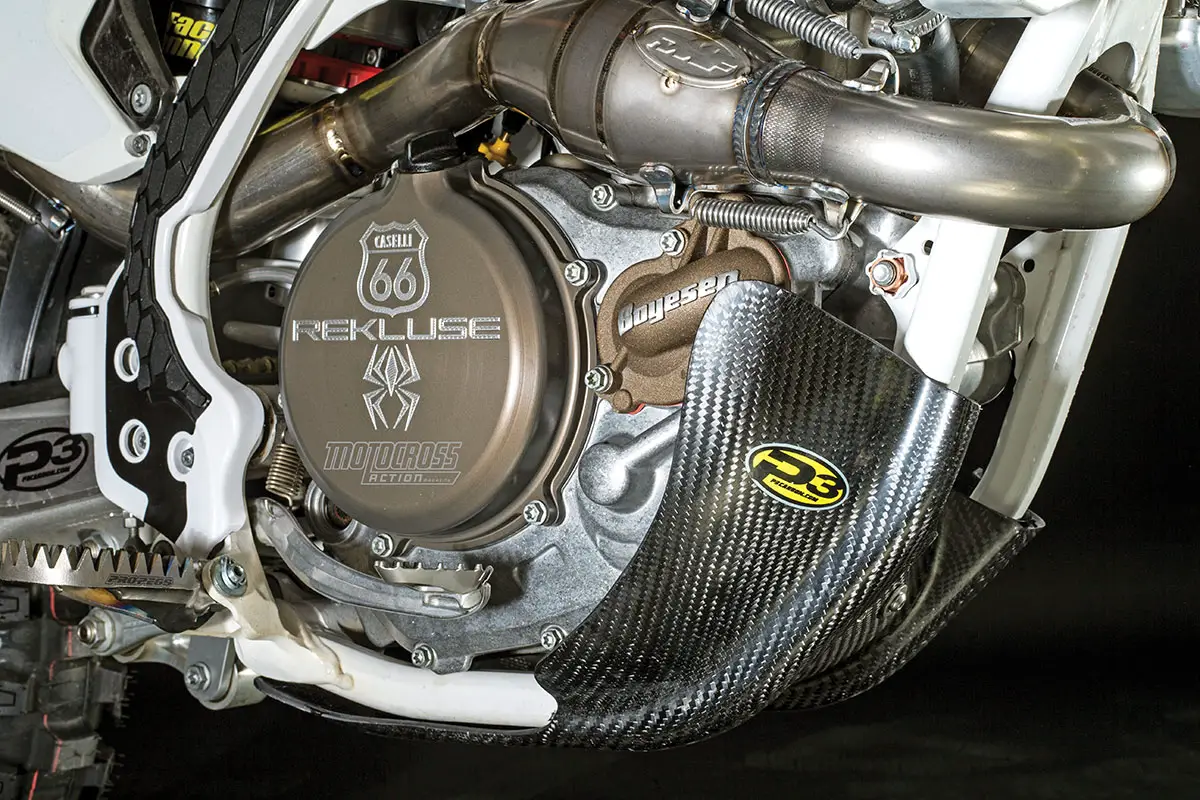ASK THE MXPERTS: SEEKING SLIP OR ENHANCING GRIP?
 Rekluse automatic clutch.
Rekluse automatic clutch.
Dear MXA,
What’s the difference between an auto-clutch and a slipper clutch? I’m interested in switching because I am ham-fisted with the clutch on my CRF450. I need mechanical help.
A slipper clutch, like the Hinson BTL, is basically a handling device and less of an actual engine aid. A slipper clutch disengages the clutch when the engine registers significant deceleration. This frees up the rear suspension by lessening chain torque. With a slipper clutch, the clutch does not disengage the clutch until the inertia of the engine slows beyond a certain point. If you chop the throttle in braking bumps, it pulls the clutch in for you to allow the rear shock to move freely; however, a slipper clutch does not stay pulled in. Once the deceleration and engine braking lessens, the clutch reengages. So, you still have to pull the clutch in to stop the bike from stalling. In short, a slipper clutch is designed to limit wheel hop on deceleration and when downshifting into corners, but it will still stall like a full manual clutch.
An auto-clutch, like the Rekluse, is a fully automatic clutch. It not only disengages the clutch when it registers deceleration, but the clutch stays disengaged until you accelerate again. With an auto-clutch, you do not have to pull the clutch in when you come to a full stop because it pulls itself in. When you turn the throttle on and the auto-clutch spins up to a pre-set rpm, the centrifugal weights inside the clutch pack move outward to engage the drive plates and keep them hooked up until you let the rpm drop to a level where the weights retract to disengage the clutch.
Both a slipper clutch and an autoclutch will work on a motocross bike, but their best and intended uses are for Supermoto (slipper) and technical enduro riding (auto-clutch). In motocross, a slipper clutch is at its best in braking bumps at the end of a long straight, when locking the rear wheel up under hard braking or at the bottom of choppy downhills. Why? Because by disengaging the clutch when you chop the throttle, you free the rear suspension from wheel hop and chain torque; however, you still have to pull the clutch in to start, shift or stop.
Conversely, an auto-clutch frees the rider from ever having to touch the clutch lever. You can come to a complete stop, in gear, with an autoclutch and never have to worry about stalling the engine. You can start from a dead stop by just turning the throttle—no need to let the clutch out. Don’t think that an auto-clutch turns your five-speed gearbox into an automatic transmission; you still have to shift from gear to gear. Most riders who race with Rekluse automatic clutches—and there have been AMA Pro riders who have had top-five finishes in Nationals with them—find that not having to worry about stalling or manipulating the clutch lever constantly frees up more brain power to use on line selection and late braking. Best of all, you can still use the clutch lever on an auto-clutch if you want to.
A few years ago a lot of motocross racers used slipper clutches, while auto-clutches were considered offroad devices. But, as auto-clutches have gotten more sophisticated, the tide has turned. Now auto-clutches are more common and more useful in motocross than slipper clutches.





Comments are closed.